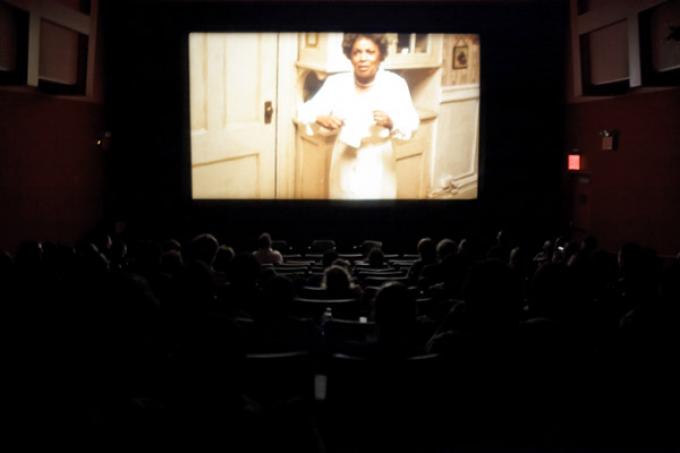PHOTOS: Jungle Fever discussion at BAM
Posted on
Following a screening of Spike Lee's 1991 film about interracial romance, Jungle Fever, three panelists lead a discussion of the film. This event was co-presented by BAMcinématek.
Michele Wallace, film critic, daughter of artist Faith Ringgold, and author of Black Macho and The Myth of The Superwoman and Dark Designs and Visual Culture moderated this discussion with historian Renee Romano, author of Race Mixing: Black-White Marriage in Postwar America and co-editor of The Civil Rights Movement in American Memory; and Imani Perry, author of Prophets of the Hood: Politics and Poetics in Hip Hop and More Beautiful and More Terrible: The Embrace and Transcendence of Racial Inequality in the United States.
The three panelists began by describing how they first experienced the film 20 years ago. Michele Wallace was interested in black filmmakers; Renee Romano said that people in interracial partnerships, such as herself, were upset about the depiction and popularizing another derogatory term for mixed-race couples (Jungle Fever); Imani Perry said she saw the film in college when she was at a point in her life where she was focusing on racial identity – and the film now seemed more nuanced to her and more about gender and class as well.
It was interesting how the three panelists were approaching the film from their different disciplinary perspectives: as a cultural critic, Wallace was interested in the filmmaking and Spike Lee’s practice using favorite actors (most of whom have become very successful); Romano was interested in the film as an historical text – for example, the unscripted conversation among the black women after Drew’s husband leaves where they talk about a dearth of “good black men” of a certain professional standing/education/class was very much a topic conversation in the 1990s. Wallace and Perry said they thought this conversation would be similar today. The panelists discussed the recent book Is Marriage for White People? How the African American Marriage Decline Effects Everyone by Ralph Richard Banks (Dutton, 2011). [Read Imani Perry’s book review here.]
The audience was interested in whether this was an accurate depiction of interracial romance then and/or now? Perry made the point that there is a dearth of representations of interracial romance and so the few that there are over analyzed and expected to do too much – this is just one couple’s fictional story but we keep turning to it because there is not many other examples in film. Romano said the film would be very different if made today – it wouldn’t be so black & white and would include other people of other ethnicities. Romano also said that rather than being a story about interracial relationships or love, this was a story about lust and that the destructive power of lust was paralleled by the destructive power of crack; the interracial romance begins with adultery – not a good start for love. Wallace called attention to the violence in the film, particularly when Angie is beaten by her father, and how this is treated as so normal and almost not a problem. Romano discussed how this violence shows another way that interracial romance is “policed” in the U.S. even 20+ years after it was decriminalized by the Loving v. Virginia decision in 1967. Perry noted that the spaces in the film that are comfortably interracial are the crack den and Bloomingdales – broadly different on the class spectrum. Perry also noted that there is much more recognition of mixed-race identity now and everyone, including the audience, was surprised to not remember that Drew was biracial.
All photos by Willie Davis.


